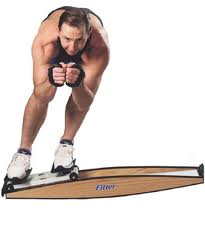It’s getting to be that time of year again.
A few years back, I purchased a ProFitter 3D Trainer because it would allow me to work on building strength and balance along with my cardiovascular fitness. This is an ideal sport-specific workout that’s perfect for when the weather is too ugly to train outdoors.
 For skating, the slide board-like action reinforces the side-directed push that’s key to stroke quality. This directly works the muscles that deliver efficient, powerful strides.
For skating, the slide board-like action reinforces the side-directed push that’s key to stroke quality. This directly works the muscles that deliver efficient, powerful strides.
